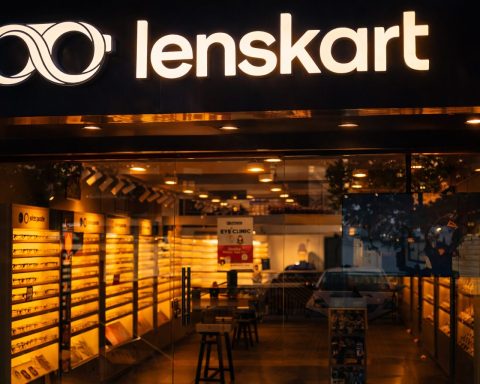- Huge Rally: LBRT jumped to $15.32 on Oct 17, 2025 (an intraday high in the $15s) – up about 28% in a single day on strong Q3 results [1] [2]. This came after closing at $11.94 the previous session [3] [4].
- Mixed Q3 Results: Liberty reported Q3 revenue of $947 million (down 17% year-on-year) and an adjusted EPS loss of $0.06 (slightly below breakeven expectations) [5]. On a GAAP basis the company actually earned $43 million (≈$0.26/share) thanks to one-time gains. Management also raised the quarterly dividend 13% to $0.09, citing confidence in the future [6] [7].
- Big YTD Decline: Despite the October bounce, LBRT is still far off its highs. Shares had fallen over 40% year-to-date before the surge [8], and remain well below last year’s 52-week high of about $23.58 [9] [10]. Friday’s spike only recovers part of that slide.
- Challenging Market: The rally comes amid a tough oilfield-services backdrop. Oil has traded around $60–62/barrel in recent weeks (Brent ≈$61) on global oversupply fears [11] [12]. North American drilling and fracking activity has declined sharply in 2025, pinching Liberty’s shale-focused business. (By contrast, diversified peers like Halliburton and Schlumberger – with international oil projects – have held up relatively better) [13] [14].
- Tech & Power Investments: To adapt, Liberty is pivoting into technology and power. In Q3 it launched “Forge,” an AI-based optimization tool, and achieved record pumping efficiency [15] [16]. It is also expanding its power business, planning over 1 gigawatt of on-site generation capacity by 2027 to serve data centers and other clients [17] [18].
- Analyst Views Split: Experts are divided. Some bulls say LBRT is undervalued (TS2.tech notes a “fair value” around $14–15 per share [19]). Most Wall Street shops are neutral-to-bearish: the consensus rating is about a Hold or Sell. For example, Barclays just downgraded LBRT to “Equal Weight” (Hold) and cut its 12-month target to $12 [20] [21]. Zacks Investment Research now rates it a “Sell,” warning that weak margins and uncertain oil demand argue for caution [22].
Stock Surges on Q3 Results
Liberty Energy’s logo (shown above) has been in the spotlight as the stock rallied on the latest earnings. On October 17, one day after Liberty’s Q3 report, the stock soared ~28% intraday, closing at $15.32 (vs. $11.94 the previous day) [23] [24]. That move (adding about $3.4 per share of value overnight) came even though broader markets were relatively calm. Traders piled in on the “better-than-feared” outcome. By contrast, LBRT’s shares had been drifting lower for months; at one point earlier in Oct they were down over 40% on the year [25].
Why the sudden jump? Simply put, the quarter’s silver linings outweighed the misses in investors’ eyes. Liberty’s revenue of $947M and adjusted EBITDA of $128M both fell short of forecasts (down ~17% YoY) [26], and adjusted EPS came in as a small loss. However, the company surprised with a GAAP net profit of $43M ($0.26/share) for Q3 [27] – far above the ~zero consensus – largely due to one-time tax benefits. Even more unusually, Liberty hiked its cash dividend by 13% in the same report [28]. Investors saw this as a signal of confidence. In Liberty’s own words, CEO Ron Gusek said the results were achieved “despite a slowdown in industry completions activity and market pricing pressure,” and emphasized that the team hit record pumping efficiency and safety levels [29]. He also noted that while near-term headwinds remain, “we are well positioned to capitalize on opportunities when conditions improve” [30].
These comments – along with the dividend boost – suggested management believes the worst may be behind them. In fact, one post-earnings analysis pointed out that a higher dividend in a down cycle “demonstrat[es] management’s commitment to shareholder returns,” helping fuel the buying [31] [32]. Volume was abnormally heavy (several million shares traded vs. under 1M average), implying many traders had expected an even worse outcome. In short, the market treated the Q3 results as encouraging news in an otherwise dreary environment, driving the one-day gain.
Recent Business and Strategy
Beyond the headline numbers, Liberty is emphasizing new growth areas. The company’s core business is hydraulic fracturing (“pressure pumping”) for oil and gas wells across North America. As drilling slowed, Liberty sought efficiency gains: during Q3 it deployed its next-generation digiPrime fracking fleets, achieving notable fuel and maintenance savings. It also rolled out Forge, an AI-based tool to optimize pumping operations [33].
At the same time, Liberty is expanding its power generation arm (Liberty Power Innovations). Liberty’s CEO has stated they plan to secure over 1 gigawatt of additional on-site power capacity by 2027 to serve industrial and data-center clients [34]. In mid-October, Liberty announced the appointment of Alice Yake (Jackson) to its board – highlighting her energy-infrastructure expertise to support this pivot [35]. Gusek remarked that Yake’s background “in energy infrastructure and power generation” aligns with Liberty’s growth strategy [36].
Liberty ended Q3 with roughly $13 million cash (per the press release) and about $253M debt [37]. Management has emphasized strict cost control: in the earnings call they noted that automation and efficiency measures helped offset much of the revenue decline. Even as revenue fell, Liberty “managed to do more with less” – Gusek’s phrase – by cutting costs and improving productivity [38]. For example, he noted several digiPrime fleets set new records for pumping hours and power usage efficiency [39].
Industry Trends and Competition
Liberty’s fortunes are tightly linked to broader oilfield services trends. This year the U.S. rig count and completion activity have declined sharply. The Baker Hughes oil rig count is down to around 414 rigs (from ~483 a year ago) [40], and frac spread (completion equipment) counts are near multi-year lows (~162 on Oct. 2025) [41]. Many U.S. producers have slashed 2025 budgets by billions as oil prices sag below the $70–75/barrel “sweet spot” [42]. In fact, a Bank of America report warned that rising OPEC+ output and weakened demand may create a persistent surplus, potentially pushing Brent crude under $50 [43] [44]. (WTI has hovered around the mid-$50s recently.)
Reflecting these conditions, the Federal Reserve Bank of Dallas’ latest energy survey found oilfield utilization at roughly –13% and sharply compressed margins [45]. In other words, most U.S. frack pumpers are working their fleets well below capacity and cutting prices to win work. This environment has hit Liberty especially hard because its customers are primarily North American shale drillers. TS2.tech notes that in the past six months LBRT shares plunged ~41%, versus only ~10% for an oilfield-services index [46]. Analysts say this underperformance reflects Liberty’s lack of overseas exposure. “Major global peers like Halliburton and Schlumberger have held up better, buoyed by international projects,” one industry note observed [47].
Looking ahead, data suggest the downturn may be nearing its trough. U.S. production growth is stalling: Wood Mackenzie and others forecast only minimal growth from Lower 48 oil output in 2025 and 2026, with current output near late-2024 highs [48] [49]. As oversupply eventually fades, analysts expect activity to resume later in 2026. Liberty’s own outlook (in filings) assumes the global oil glut peaks in mid-2026, with U.S. frac activity recovering by late 2026 [50] [51]. In that scenario, tight service capacity could help lift prices again.
Analyst Sentiment and Quotes
Wall Street’s take on LBRT is mixed. According to Reuters data, the average analyst rating is around Hold/Sell (mean score 2.50 out of 5) [52]. Price targets range widely. For example, Barclays analyst Eddie Kim recently cut LBRT to “Equal Weight” (Hold) with a $12 12-month target [53]. (Barclays had been more bullish at $14.) Zacks Investment Research concurs on caution, giving LBRT a “Sell” rating due to weak margins and demand uncertainty [54].
Other brokers are less pessimistic. Piper Sandler’s Derek Podhaizer (formerly at Barclays) has a $13 target (Neutral) [55], and Stifel’s Stephen Gengaro still sees upside around $19 (despite trimming from $20) [56]. A Benzinga analysis of recent forecasts finds a median target near $15–$16, reflecting the view that the stock is cheap on sales (roughly 0.5× revenue [57]) but may need improving fundamentals to justify a higher multiple.
In media coverage, analysts note the same points. A Yahoo Finance piece highlighted Liberty’s falling profit margins (net margin ~5% vs. 8% a year ago) as a concern. Commentators also cite Liberty’s strengths: its “tech edge” in automation and a strong balance sheet (low leverage) could pay off if markets recover. On Liberty’s conference call, Gusek himself admitted headwinds will persist “in the near term” but assured investors the company has “differential results” from its tech innovations [58].
Outlook: Near-Term vs. Long-Term
In the near term, most forecasters expect LBRT to tread water or trade sideways. The core drivers will be oil prices and U.S. drilling. Absent a sustained rebound above ~$65–70 oil, frac activity is likely to remain subdued, limiting volume growth. That would keep pressure on revenue and leave Liberty’s dividends and efficiency stories as the main bright spots. Citigroup and Wells Fargo analysts have previously warned that lower exploration budgets in the U.S. should keep oilfield services earnings muted through 2025, and Liberty is exposed to exactly that trend.
Longer term, confidence hinges on a market recovery. If oil supply/demand rebalances by 2026 as expected [59] [60], Liberty could benefit from a tighter supply of next-generation frac fleets and continued growth in on-site power demand (e.g. for data centers and LNG projects). In that case, Liberty’s investments in AI (Forge) and clean diesel fracturing engines might help it regain pricing power and win more contracts. Some optimistic analysts note that with global oil demand still trending upward over the decade, LBRT could eventually be worth a multiple of current levels once frack activity turns up.
As a concrete example, the median Wall Street price target (about $13–14) is only a bit above today’s level [61]. At $16 per share, Liberty’s market cap would still be only ~$2.6 billion – less than its $3.0B sales run-rate and far below the $7–8B valuations it saw during the last energy boom. If oilfields recover, even this modest target could prove conservative. On the flip side, if prices stay low or technology disruptors slow the field further, the stock could languish or fall back toward the $10–12 range.
In summary, Liberty Energy’s stock jump on Oct 17 reflects a mix of positive surprises (GAAP profit, dividend hike) and relief that things weren’t worse. Company leaders stress that the down cycle is temporary and hope that their tech-driven efficiency gains will pay off when markets turn. For now, investors should watch oil prices, rig counts, and forthcoming earnings for clues. The rally has given short-term optimism, but long-term gains will likely depend on the broader oilfield recovery.
Sources: Recent financial news and filings, including Liberty Energy’s Q3 2025 press release [62] [63], Reuters stock quotes [64] [65], and industry analyses [66] [67] [68] [69] [70]. Expert commentary and data from TechStock² (ts2.tech) and Yahoo Finance are cited above.
References
1. ts2.tech, 2. www.reuters.com, 3. www.reuters.com, 4. ts2.tech, 5. ts2.tech, 6. ts2.tech, 7. investors.libertyenergy.com, 8. ts2.tech, 9. ts2.tech, 10. www.reuters.com, 11. ts2.tech, 12. oilprice.com, 13. ts2.tech, 14. ts2.tech, 15. ts2.tech, 16. investors.libertyenergy.com, 17. ts2.tech, 18. investors.libertyenergy.com, 19. ts2.tech, 20. ts2.tech, 21. www.sahmcapital.com, 22. ts2.tech, 23. www.reuters.com, 24. ts2.tech, 25. ts2.tech, 26. ts2.tech, 27. investors.libertyenergy.com, 28. investors.libertyenergy.com, 29. investors.libertyenergy.com, 30. investors.libertyenergy.com, 31. ts2.tech, 32. investors.libertyenergy.com, 33. ts2.tech, 34. investors.libertyenergy.com, 35. investors.libertyenergy.com, 36. investors.libertyenergy.com, 37. investors.libertyenergy.com, 38. investors.libertyenergy.com, 39. investors.libertyenergy.com, 40. www.oklahomaminerals.com, 41. www.oklahomaminerals.com, 42. www.oklahomaminerals.com, 43. oilprice.com, 44. oilprice.com, 45. www.dallasfed.org, 46. ts2.tech, 47. ts2.tech, 48. www.oklahomaminerals.com, 49. www.edgen.tech, 50. investors.libertyenergy.com, 51. www.edgen.tech, 52. www.reuters.com, 53. www.sahmcapital.com, 54. ts2.tech, 55. www.benzinga.com, 56. www.benzinga.com, 57. ts2.tech, 58. investors.libertyenergy.com, 59. investors.libertyenergy.com, 60. www.edgen.tech, 61. ts2.tech, 62. investors.libertyenergy.com, 63. investors.libertyenergy.com, 64. www.reuters.com, 65. www.reuters.com, 66. ts2.tech, 67. ts2.tech, 68. ts2.tech, 69. ts2.tech, 70. ts2.tech










